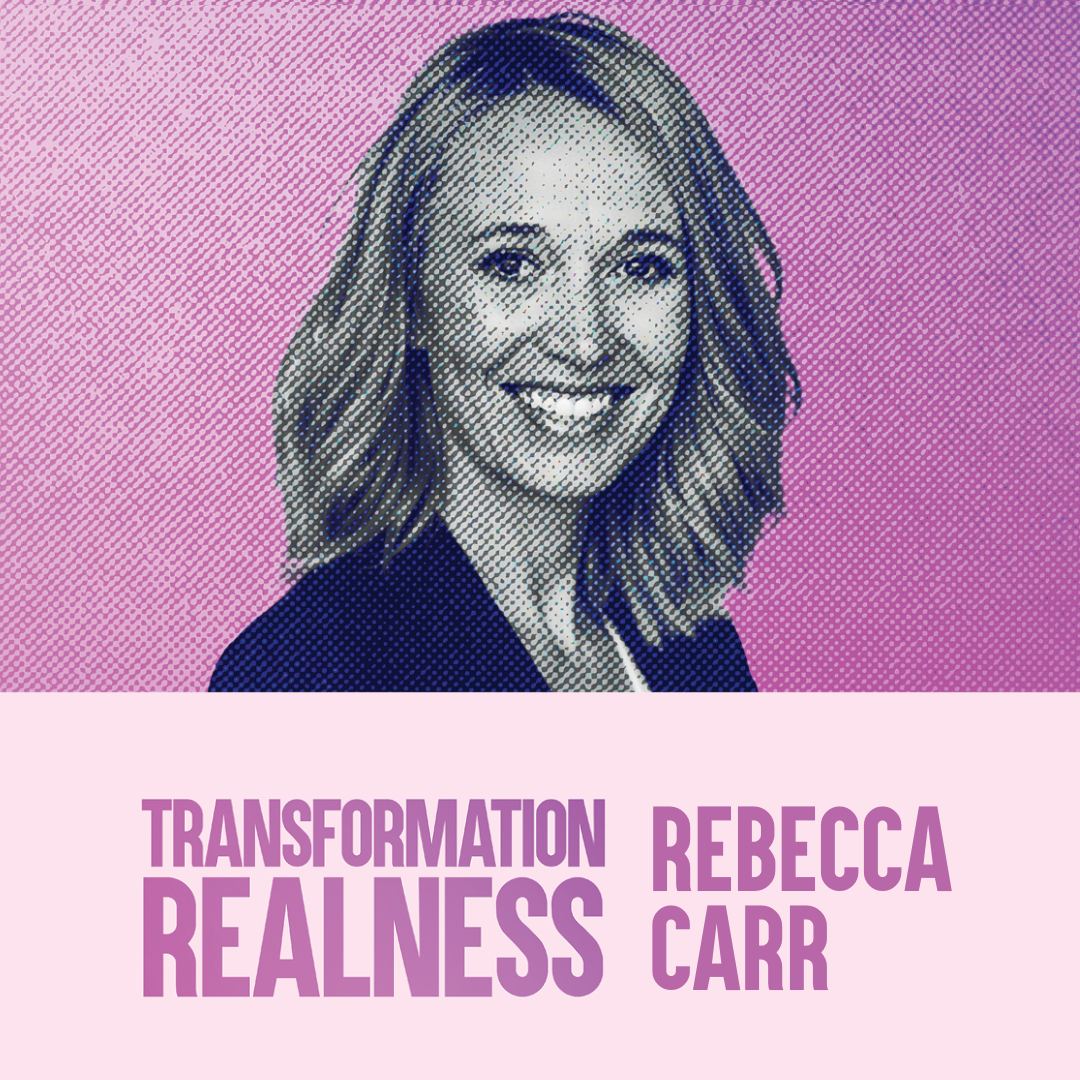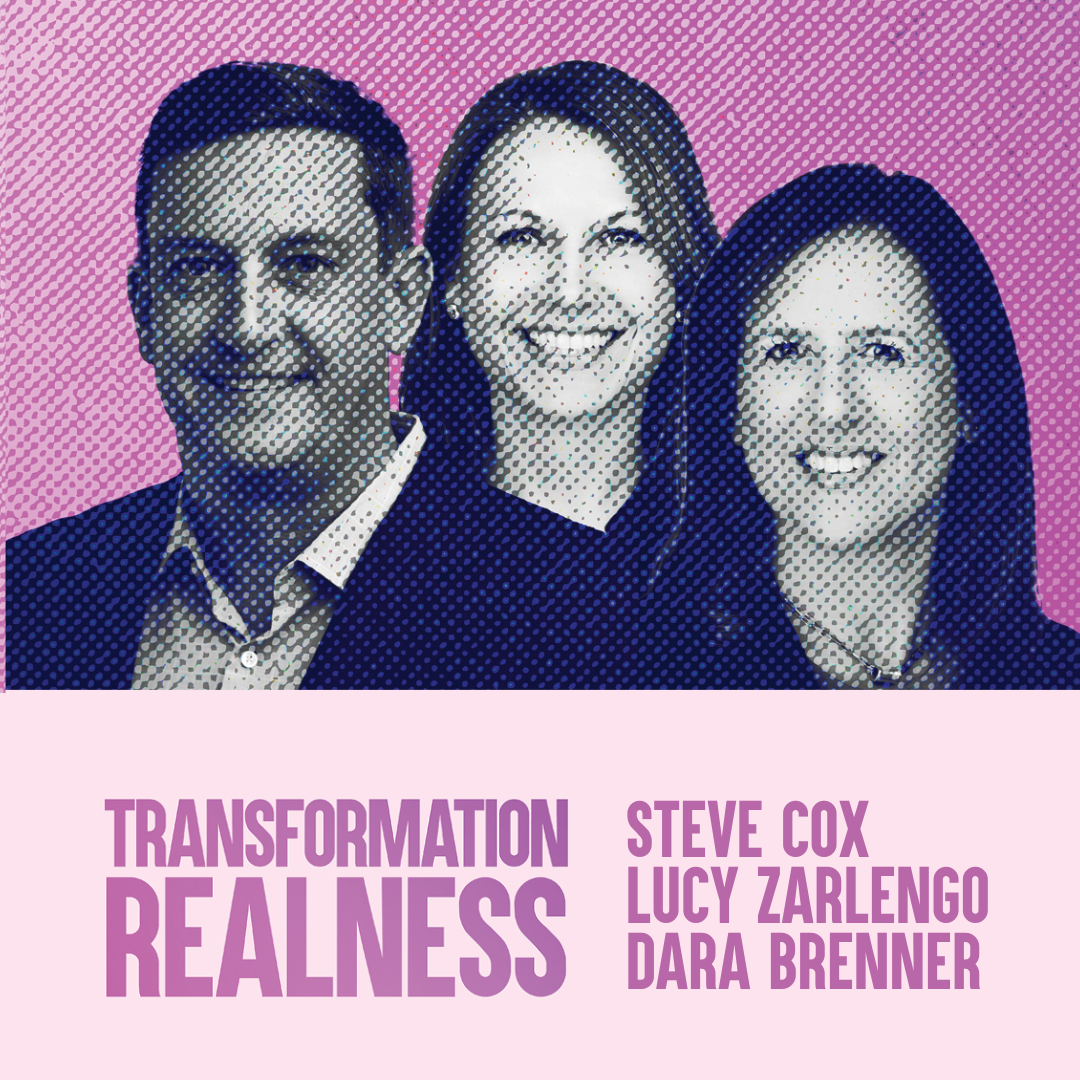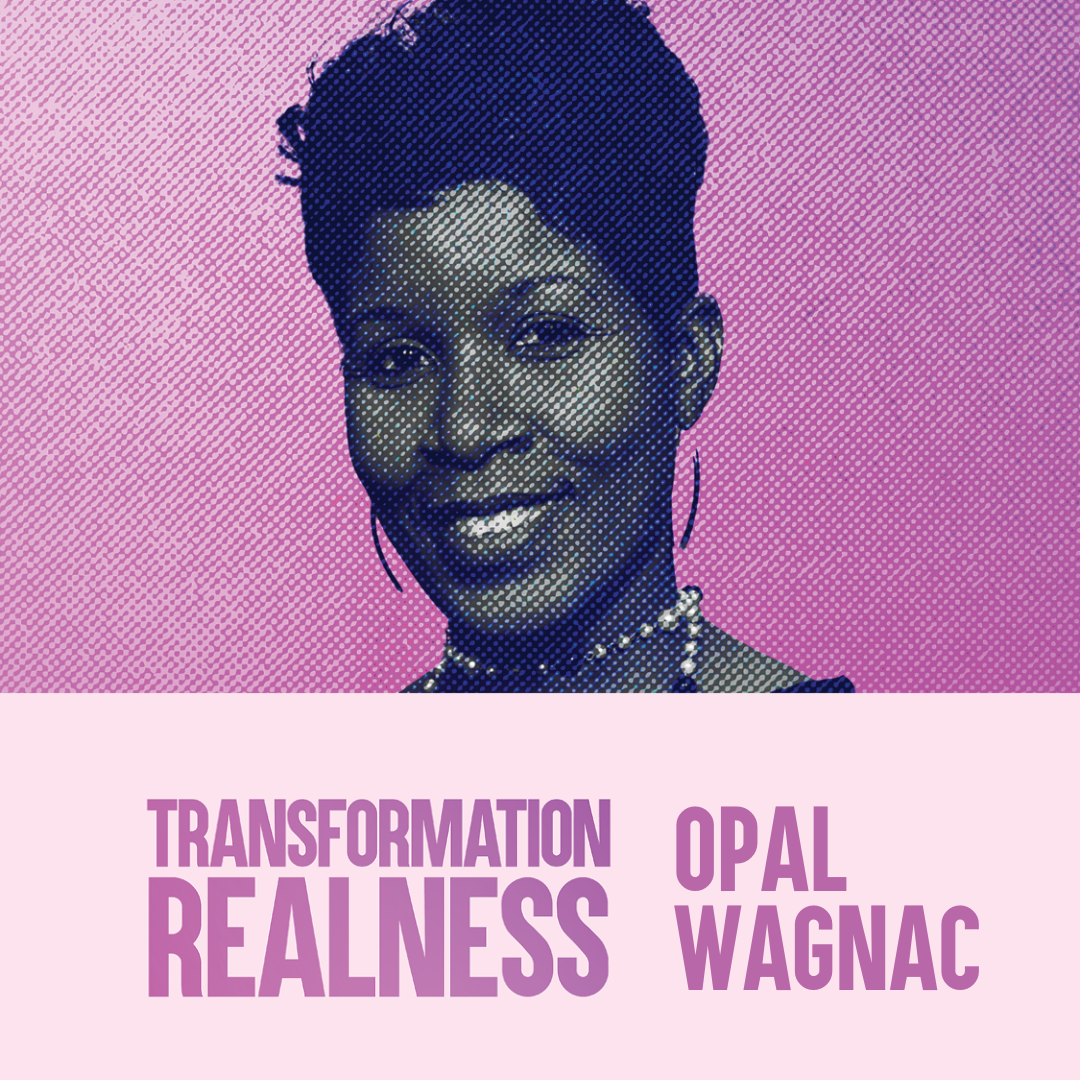In this episode of Transformation Realness, I’m sitting down with the fabulous David Wachtel, General Manager of Talent Products at a little HCM called Workday—maybe you’ve heard of it?—to talk about how the company is taking HR tech innovation from good to downright iconic.
David is the brains behind Workday’s talent suite—recruiting, onboarding, learning, skills, capabilities and more. If it touches talent, it’s got David’s fingerprints all over it. “It’s a space where we actually are impacting people’s lives,” David says. “It matters.”
And let me tell you, this episode is all about how Workday is making that impact bigger and bolder than ever. David tells us all about how Workday is giving customers and partners the tools to build what they need, when they need it. No waiting for updates. No settling for less. And I think that sets an exciting precedent for the entire HR tech industry.
If you want to catch a glimpse of the HR tech ecosystem of the future, don’t go anywhere because this conversation is for YOU.
Extending the Possibilities
First up: Extend. Workday created Extend because they saw a problem: customers had unique needs that couldn’t wait for the next product release or survive on clunky third-party integrations. Extend puts the power in their hands, letting them build exactly what they need, when they need it, all while staying inside Workday’s trusted ecosystem. No red tape, no compromises, just solutions that actually work.
“Extend is a platform that we’ve been working on for the last couple of years that enables customers to build out their own applications and experiences in Workday,” David says. “They get to benefit from all of the data and the security and the privacy and all the great things that we have in Workday.”
But there’s even more to Extend than meets the eye. “It’s good to think of Extend as not just a platform,” David says. “It is, but it’s also an ecosystem and a community.” With over 2,000 apps already live and 8,000 developers tinkering away, Extend is proving that innovation isn’t limited to Workday’s roadmap—it’s whatever you dream up.
Built on Workday: The Next Evolution
Now, if Extend is a playground, then Built on Workday is a marketplace—one where Workday’s partners can strut their stuff. This initiative is giving partners the tools to build, distribute and manage apps right inside Workday’s ecosystem. “Built on is creating the opportunity for Workday to be more of a marketplace, where partners can actually build apps directly in Workday,” David says.
When I say it’s a marketplace, I mean it. Partners can manage and monetize their apps, too—all within the Workday system. “Partners can build an app or a capability set on Built on Workday, and then they can redistribute it,” David says. “They can centrally manage it, they can charge for it, they can make money on it, they can do updates to it.”
This isn’t Workday dipping its toes in the innovation pool: it’s a full cannonball. Eight partners, including ADP and Kainos, are already making waves with apps designed to solve niche HR challenges. And trust me, the demand is real—Kainos already has 500 customers lined up for their app. Talk about validation.
Trust as a Competitive Edge
Innovation is great, but let’s be real: it means nothing without trust. And Workday? They’ve got that on lock. “Being customer-centric is not new to Workday,” David says. “We’ve always prided ourselves on being a very customer-focused business.”
David emphasizes that trust and reliability are baked into everything Workday does. “We think that the Workday brand stands for something. We think it stands for trust. We think it stands for reliability,” David says. “And we’ve always wanted customers to know that if they were working with a customer that was partnered with Workday, they’re good.”
At a time when HR leaders are juggling more tech scrutiny than ever, this commitment to trust is a game-changer. Workday is proving that you can innovate without leaving your customers in the dust.
And let’s not overlook the bigger picture here. Workday is doing more than creating products — they’re setting an example for the entire industry and really showing us what leadership looks like in HR tech.
From empowering developers and partners to elevating customer trust, Workday is leading the charge toward a more collaborative, high-impact future. Every other provider in this space should be taking notes.
People in This Episode
- David Wachtel, LinkedIn
Transcript
Kyle Lagunas:
Hello, my little blueberries. Welcome back to Transformation Realness, the only show all about people who are doing their best to make the world of work less shitty and have the guts to share their story: the good, the bad and most of all, the real. This podcast is produced in partnership with Rep Cap and hosted by yours truly, the irrepressible Kyle Lagunas, Head of Strategy and Principal Analyst at Aptitude Research, the leading boutique research firm covering HR tech in transformation. Get into it.
Today’s episode is the next installment of Built on Workday: The Birth of the New HR Tech Ecosystem. And it takes us to the core of my day job as an industry analyst. And let me tell you, we are diving into some real next level insights. Picture this: a conversation that bridges the innovation of HR tech with the practical needs of organizations. And we’re not talking pie in the sky ideas here. No, today we are getting real about partnerships, platforms and the actual work it takes to make HR transformation stick.
I’m sitting down with my dear friend Dave Wachtel, the General Manager of Talent Products at Workday, who leads everything from talent optimization to learning and onboarding, and of course, skills capabilities. We will unpack how Workday is changing the game with its partner ecosystem, what it means to empower customers with tools like Extend, and how Built on Workday might just be the blueprint for the future of innovation in this space. Check it out.
Hello, everyone. Hi, my little blueberries. Welcome back to a very special episode of Transformation Realness. We are coming to you live from the back of a bus in Las Vegas. We’re at HR Tech. And Workday, teeny tiny little HCM company nobody’s ever heard of, has got this sick setup. We are in a full podcasting studio, and I’m sitting down with one of my dear friends, Dave Wachtel. Hi, Dave.
Dave Wachtel:
Hey, Kyle. How are you? Good to see you in the back of this bus.
Kyle Lagunas:
I know. Literally, when you guys told me we were doing this, I was like, “That sounds cool, I guess. We’ll do it.” And then, walking in here is like, “This is amazing.”
Dave Wachtel:
Yeah, it definitely came out better than I think a lot of us thought when we heard the concept of, “Oh yeah, the bus and there’ll be a podcast booth in the back.” And actually, it’s a really comfortable, nice experience.
Kyle Lagunas:
It’s nice.
Dave Wachtel:
Especially as an opportunity to kind of take a step off of the expo floor.
Kyle Lagunas:
Yeah.
Dave Wachtel:
There’s a lot going on out there.
Kyle Lagunas:
And chill.
Dave Wachtel:
It’s a nice little calm space, for sure.
Kyle Lagunas:
For those who don’t know, who are you and what do you do?
Dave Wachtel:
My name’s Dave Wachtel, and I’m the General Manager of our Talent Products at Workday. So I’m ultimately responsible for the roadmap, the strategy and the execution of everything that Workday builds and sells in Talent. So that’s recruiting candidate engagement, learning, talent optimization and management. It’s the bulk of our skills, capabilities, onboarding, our Journeys product, which is our employee experience overlay, as well as Peakon, voice of the employee.
Kyle Lagunas:
How much sleep do you think you get in a given week? That’s a lot of work, girl.
Dave Wachtel:
Yeah, no, I know. Well, my EA is trying really hard to schedule more of that, sleep.
Kyle Lagunas:
Literally?
Dave Wachtel:
In my calendar.
Kyle Lagunas:
Oh, my God.
Dave Wachtel:
No. Workday believes firmly in work-life balance.
Kyle Lagunas:
I get that.
Dave Wachtel:
And we try to make sure that we get through all the important work things while simultaneously-
Kyle Lagunas:
Yeah.
Dave Wachtel:
… sleeping. Occasionally.
Kyle Lagunas:
Yeah. Yeah. And seeing your partner and your kids. Yeah. Oh, yeah, them. Well, you’ve been in the space for a while too. This is not your first leading…
Dave Wachtel:
No, yeah. I actually got my start in HR tech at Cornerstone OnDemand back in 2011. I was one of the early product managers there, and I was the person that got the opportunity to say, “Hey, Cornerstone’s built a lot of stuff in learning.” And Adam Miller, the CEO, is like, “I’d like to make money some other ways, and how can we do that?” And so, I got to experiment in performance management and goals and onboarding. And the thing that really took off was applicant tracking. And so, I actually had the opportunity to build an applicant tracking system from nothing.
And we had a pretty good run there, selling applicant tracking out of Cornerstone. There’s still customers, some pretty big companies using it today. And I did that for almost six years. I felt like I was ready to take a break from HR Tech. I went to Amazon for a number of years. I moved up to Seattle. And then, somehow I found myself back into HR Tech in 2020.
Kyle Lagunas:
Oh, you’ve got to come back, baby.
Dave Wachtel:
Yeah. Honestly, I don’t know that people would understand that aren’t from the industry. My wife certainly doesn’t understand. But there’s definitely something about it. I enjoy both the creativity, the energy, the relationships and people that I’ve met over time. But also, man, when I was at Amazon, I was helping make fulfillments, deliver your package a couple hours earlier in the Christmastime period. And at a certain point, you kind of sit back and you’re like, “What am I doing?”
Kyle Lagunas:
“What am I doing?”
Dave Wachtel:
“What am I doing?”
Kyle Lagunas:
Yeah.
Dave Wachtel:
And I don’t know, I think HR technology is a really cool space because we, not to get all emotional about it, but it’s a space where we actually are impacting-
Kyle Lagunas:
It matters, the workplace matters.
Dave Wachtel:
… people’s lives. It matters, I think when… The biggest things that happen in someone’s lives are they get married, they have a kid, there’s maybe deaths in the family. And then there’s getting a job offer. It changes everything. It moves you.
Kyle Lagunas:
Getting a promotion.
Dave Wachtel:
Getting a promotion. You could move to a different city. You could take on a whole new team and the people that you work with every day. And I think at least what we do in HR tech, we are striving to make those people’s lives even just a little better. And I think sometimes we get it right and sometimes we don’t, but at least we’re in the business of trying.
Kyle Lagunas:
Yes.
Dave Wachtel:
We’re trying to make people’s lives better. I think that’s pretty cool.
Kyle Lagunas:
That is the perfect setup for what I want to talk about. So this week I have this opportunity to do this podcast in here, in the bus. And I knew immediately what I wanted to do. Carl, your new CEO has been really bullish on expanding your partner program, and this is something that is unique in our space. A lot of the traditional HCMs, they want to have total wallet share, right? They want to do it all. They want to go as wide and as deep as they can, right?
And that has been the model for a long time. And you guys are still building a ton of product. You just listed off eight different things that are under you, and those are just categories of product, by the way. Right? But I really like seeing that because this work matters, that what matters most isn’t just like wallet share or competitive environments. It’s actually bringing value to the customers. And so, this week we’re talking about Built on Workday, because the partnership ecosystem, they were already good partners before we got this ramp up. But I think that’s accelerating some of the relationships with existing partners, bringing new innovators to the table. I have to imagine that for you, it’s kind of fun to see.
Dave Wachtel:
It is.
Kyle Lagunas:
Yeah. There’s so many innovators in our space. Now I actually get to work with some more really cool people.
Dave Wachtel:
It’s fun on a lot of different levels. It’s fun on a technical, innovation level. It’s fun on a creating value for our customers level. And it’s fun on a competitive level. And I think, yeah, if you were talking to Workday even four years ago, I think we thought we were very much the center of the universe and we were going to build everything.
And that wasn’t a bad strategy. It was the right strategy at the time. So I don’t look at it and say we were doing something wrong. But the space has evolved, and more importantly, the demands of our customers have evolved. And I still think we think of Workday as being a really important body in that universe, but maybe not the center of the universe. Maybe we’re like the sun. We’re like, we’re still an important part, but we’re a little bit… We need to work with those around us. And at the end of the day, the thing that’s going to make Workday successful is happy successful customers.
Kyle Lagunas:
Yep.
Dave Wachtel:
And to the extent that we can help open that up, accelerate that, make that more possible, we win. We all win and they win. And so, we were kind of moving in the trajectory of enabling partners and integrations even before Carl joined. Some of the things we launched initially in Extend, the original business case on that, predates Carl. But when Carl came in, he really put his foot on the accelerator on making sure that every one of our teams, every one of our technology teams, our roadmaps and our strategy were really moving in the direction of empowering customers to build things on Extend and partners now to build on Built on.
Kyle Lagunas:
What’s Extend?
Dave Wachtel:
What’s Extend? So Extend is a platform that we’ve been working on for the last couple of years that enables customers to build out their own applications and experiences in Workday. They get to benefit from all of the data and the security and the privacy and all the great things that we have in Workday. And they can also leverage the same experience set. So their users don’t necessarily know if they’re using a Workday-delivered experience or if they’re getting something that was delivered on Extend.
And what Extend allows us to do, what it allows customers to do, is if you see something you need in a unique requirement or something specific or something that Workday doesn’t do, before Extend your options were submit brainstorms and wait for Workday to build it, or go buy some partner who’s doing that one little niche thing and integrate it. Extend has opened up a whole-
Kyle Lagunas:
There’s a custom integration for it. Maintain a custom integration for it that’s probably not bidirectional. Yeah, yeah.
Dave Wachtel:
Yeah. And Extend has opened up a whole other layer of innovation for our customers. So for the last few years, you’ve gotten everything that our team has built from an innovation standpoint. And then, you also got everything that customers could build for themselves. And I was just looking at the stats. We have over 2,000 Extend apps live in production. We have a thousand customers that are using Extend that have built things out. And we have over 8,000 Extend developers in the community. Because I think it’s good to think of Extend as not just a platform. It is, but it’s also like an ecosystem and a community. There are over 8,000 people out there who are developing on Extend.
Kyle Lagunas:
Didn’t you guys actually have a Developer Con bring together a bunch of these nerds?
Dave Wachtel:
Yeah. We have DevCon, and it happens once a year. I think it happens in late spring, early summer. And it used to be a small group of people, like a couple dozen at these small roundtables. And the last one they did, there’s full expo floor, and they do 24-hour hackathons.
Kyle Lagunas:
That’s cool.
Dave Wachtel:
And really cool things. And I think one of the neat things about it is not only is it giving customers the opportunity to create that innovation and build those apps that we hadn’t built otherwise. But I said before, one of the things I’m really excited about is the competition. I think it’s making all of us better.
Kyle Lagunas:
Yeah.
Dave Wachtel:
Because we’re seeing what is possible. We’re seeing what customers could build with capabilities on Workday in places where we might’ve said, “It’s not a big enough opportunity for us to invest in” or “It’s too niche for this one use case.” They’re showing us, these Extend developers and customers through their innovation investment are showing us that these things can get built.
Kyle Lagunas:
That’s pretty neat. And I also feel, look, the reason why I jumped at the opportunity to come and have these conversations this week is because as an industry analyst, a lot of the consideration that we have is what does leadership in this market look like? And traditionally, it’s been market share and customer growth and momentum features that are being released. Those were the tried and true KPIs of what leadership looked like.
For me, and I’m a geriatric Millennial, a little bit of an emotional person, right? I think the ethos of this initiative and the spirit of this strategy, that’s the kind of market leadership that we need, where it is the customer’s needs that are the driver of innovation. It’s not just us trying to grow wallet share or us trying to corner a market. No, we are going to corner the HR market by bringing more impact and more value to them than anybody else. And I want to see every other major provider in our space doing the same thing, because this is something that every customer needs. It’s not like a unique Workday problem, right?
Dave Wachtel:
Yeah. Absolutely.
Kyle Lagunas:
That’s why I brought up you being in the space before, because we’ve seen other companies that are like, “We’re going to do all of it ourselves.” Right?
Dave Wachtel:
It is the next phase of innovation I think for our space. I think customers, businesses demand more now than they did before. And especially as you see the CHRO, the Chief Human Resources Officer, and to a certain extent the CFO in the other parts of our business stepping up and having a bigger seat at the table, they not only command more direction, but they have more influence and they command more dollars. And so, to the extent that Workday can be the platform where they can come and get those solutions, even when we haven’t built them, and they can get them sooner and they get them faster and they can use Extend to do that, I think that is the future. AI also, that also plays a huge part in it too.
Kyle Lagunas:
The business doesn’t care that Workday doesn’t see enough opportunity to build that application themselves.
Dave Wachtel:
Exactly. That’s exactly right. Being customer-centric is not new to Workday. We’ve always prided ourselves on being a very customer-focused business. But we’re also a business too, right? And so, there are lots of things that have always made a lot of sense to us.
Kyle Lagunas:
We’re not running a non-profit here and just loving and doving each other all over the place. You’ve got to make priorities. You’ve got to make choices, right? You have limited resources, limited capacity.
Dave Wachtel:
Exactly. And everyone does too. So do our competitors. They have limited resources. And what we’re doing with Extend and Built on Workday is we’re taking the limitations that we have on what we can do, and we’re trying to take those off the table. Right? And we’re trying to make it more possible for customers to build their own things. And we haven’t even really talked about Built on yet.
Kyle Lagunas:
Yeah, yeah, yeah. Well, talk to me a little bit about Built on then. Yeah. What is it? Because here I thought I came up with an idea. I was like, my story, the thread I’m pulling through here is Built on Workday. And Jen Newman, the Head of Analyst Relations here for HCM, she’s like, “Oh, they’re going to love that. They’re doing a Built on campaign themselves.” I’m like, “Oh, wow, okay.” Yeah.
Dave Wachtel:
I’m sure you’ll get appropriate credit.
Kyle Lagunas:
It was my idea first.
Dave Wachtel:
Yeah. We heard it here first. Yeah, I’ll make sure they know that. But yeah, Built on is equally if not more exciting than what we’re doing with Extend. They’re separate. They’re not the same thing, but leveraging some of the same platform and underlying technology. But Built on is turning Workday into… creating the opportunity for Workday to be more of a marketplace, where partners can actually build apps directly in Workday.
Now with Extend today, when you build an app, you’re building it in that customer tenant. It’s not really reusable. You can rebuild them over and over again. Built on Workday is a different framework. Partners can build an app or a capability set on Built on Workday, and then they can redistribute it. They can centrally manage it, they can charge for it, they can make money on it, they can do updates to it to all the customers that they’re working with.
We announced at Rising last week that Built on Workday is currently in EA. We have eight EA partners that we’re working with already. I’ve got to look at my list to remember them, but we got ADP, Strada, Avalara, Kainos, Cognizant, Huron, Hyland and PwC are all actively building apps. I know that for Kainos, for example, they have over 500 customers already who they’re working with who said they’re going to sign up for the app that they’re building around document management, and more than that. And we think this is a really powerful next step of innovation for Workday.
Kyle Lagunas:
You’re already getting the validation for that. People are wanting these things, which I think is super cool. But all right. Well, so yeah, we’re talking about momentum. We’re talking about all the numbers of all these people getting into this blah, blah, blah. Workday historically with their partner program is very intentional.
Dave Wachtel:
Yep.
Kyle Lagunas:
I want to say calculating. And it wasn’t just like, “Oh, we have a mutual customer? Then you’re a partner.” You guys were very intentional about who you let in. Right? And this is not an open cattle call now, right? Can we talk about how… Because look, people are clamoring. Every vendor wants to be a part of this, right? Clamoring to be a part of it. How are you maintaining the integrity of these partnerships at this scale that you’re moving through now? I think that’s an important part of this being successful too.
Dave Wachtel:
Yeah, absolutely. One of the reasons that we’ve always had such a high bar for partners and people that we put the Workday logo next to is that we think that the Workday brand stands for something. We think it stands for trust. We think it stands for reliability. And we’ve always wanted customers to know that if they were working with a customer that was partnered with Workday, they’re good. For whatever our voice was worth in that conversation, we were able to say, “Hey, yeah.”
Kyle Lagunas:
Legit.
Dave Wachtel:
This is a reliable, legit partner that you can work with. Unfortunately, to a certain extent, that level of rigor doesn’t scale. And in this world where we were talking about before, about needing to create more partnership opportunities and capabilities for our customers, we need to create new programs and new processes. Our partnership program has undergone a complete re-overhaul over the course of the last six months.
It’s something we could go deeper in, but we’re still maintaining a bar of credibility. There’s still application processes. You still need to have mutual customers. You still need to have references. But in order for us to scale, we have to just change a little bit how we’re thinking about it. And we think at the end of the day, we’ll benefit and our customers will benefit from it. And if we learn that there are bad actors or partners that are coming in and doing things they shouldn’t do, I think we’ll be on top of that.
Kyle Lagunas:
Yeah. You’re going to have to be, because bringing it all the way back, it’s the customer that matters most. And trust has always been a part of the ethos for Workday, a hundred percent. Moving people to cloud, they had HR leaders, the CTOs, they were really making a big bet on you all. Right? And that’s a really vulnerable moment for them to take that kind of risk.
I think that the trust piece has to be maintained, especially with this. Innovation cycles are absolutely out of control right now. There is just so much that people can build and deliver. And I think that that trust piece, you guys are going to have to be arbiters of trust as well. Right? And it brings a new, I think, responsibility for you all as the core partner maybe, the sun to these different, in the center of this solar system or whatever. And I think that that is, I’m glad that you’re sensitive to it. I expect you to be sensitive to it. And as an analyst, I’ve got to stay on top of you guys about it to know how is this actually going.
Dave Wachtel:
Yeah, and we’d ask you to and the other analysts, the other folks, we work to, and our customers will keep us more honest than anyone. But we do put a lot of value in the brand, in the trust that we think we’ve built. We know it’s easily lost and it’s hard to gain back.
Kyle Lagunas:
Oh, absolutely.
Dave Wachtel:
And so, as we go through all of this, but I think we can still even elevate the level of trust in some of these things. For example, in Built on, you get access to our AI gateway.
Kyle Lagunas:
Yeah.
Dave Wachtel:
Where we have a number, I think there’s six or so AI models and APIs that partners get access to that are Workday-powered models. Things like Skills Cloud, for example, where you can now, if you’re a partner and you want to build something really cool in Skills, you can do that through Built on, and you get to rely on… AI is the big topic these days. And we talk a lot about outcomes and the excitement of what AI can do, but I’m in just as many conversations with customers about the concerns and the holdbacks and hesitations about trust and bias and all those things. And we think we can extend Workday trust through enabling you to build apps and partners to build apps leveraging our AI models.
Kyle Lagunas:
Yeah, yeah, yeah, that are vetted.
Dave Wachtel:
Trusted.
Kyle Lagunas:
They’re vetted.
Dave Wachtel:
Exactly.
Kyle Lagunas:
Yeah, yeah, yeah. Well, again, that’s why I see this as a new type of leadership that I think others need to, they also need to follow this example, especially because innovation’s happening so fast. And I feel like HR organizations are getting really bogged down with deeper technical scrutiny of these products and applications than ever before. It’s stalling innovation for the HR organization. They can’t keep up with these things, right? So I think it just helps them to move faster, to stay on the edge, but do it feeling like they’re going to be okay. Right? It’s not willy-nilly, right? We’re just flying by the seat of our pants.
Well, Dave, thank you for coming. I appreciate you hosting us, but then also just bringing this kind of thought leadership to market. I think it’s really cool.
Dave Wachtel:
Yeah, of course. Thanks for having me. It’s always a great time chatting with you, Kyle.
Kyle Lagunas:
Yeah. Bye, Dave.
And that’s all the time we have for today. A massive thank you to Dave for joining me and serving up some serious realness about innovation partnerships and building a better future for HR tech. Workday’s commitment to empowering customers, whether it’s through Extend, their AI gateway or Built on Workday apps, I think it’s setting a new standard for leadership in the space.
Here’s the big takeaway for me. In an era where innovation is moving at breakneck pace, success is about more than flashy new features. It’s about trust, impact and enabling HR teams to deliver real business value without getting bogged down in technical scrutiny. Workday is leaning into this challenge, and honestly, it’s the kind of leadership we all need right now.
Big thanks to Workday for hosting us again and to you, my fabulous listeners, for sticking with me through another deep dive to the guts of HR transformation. I’ll be back soon with more bold conversations, sharp insights, and of course a side of sass. Until next time, stay curious, stay gutsy and above all, stay real. Catch you on the next episode. Bye.









